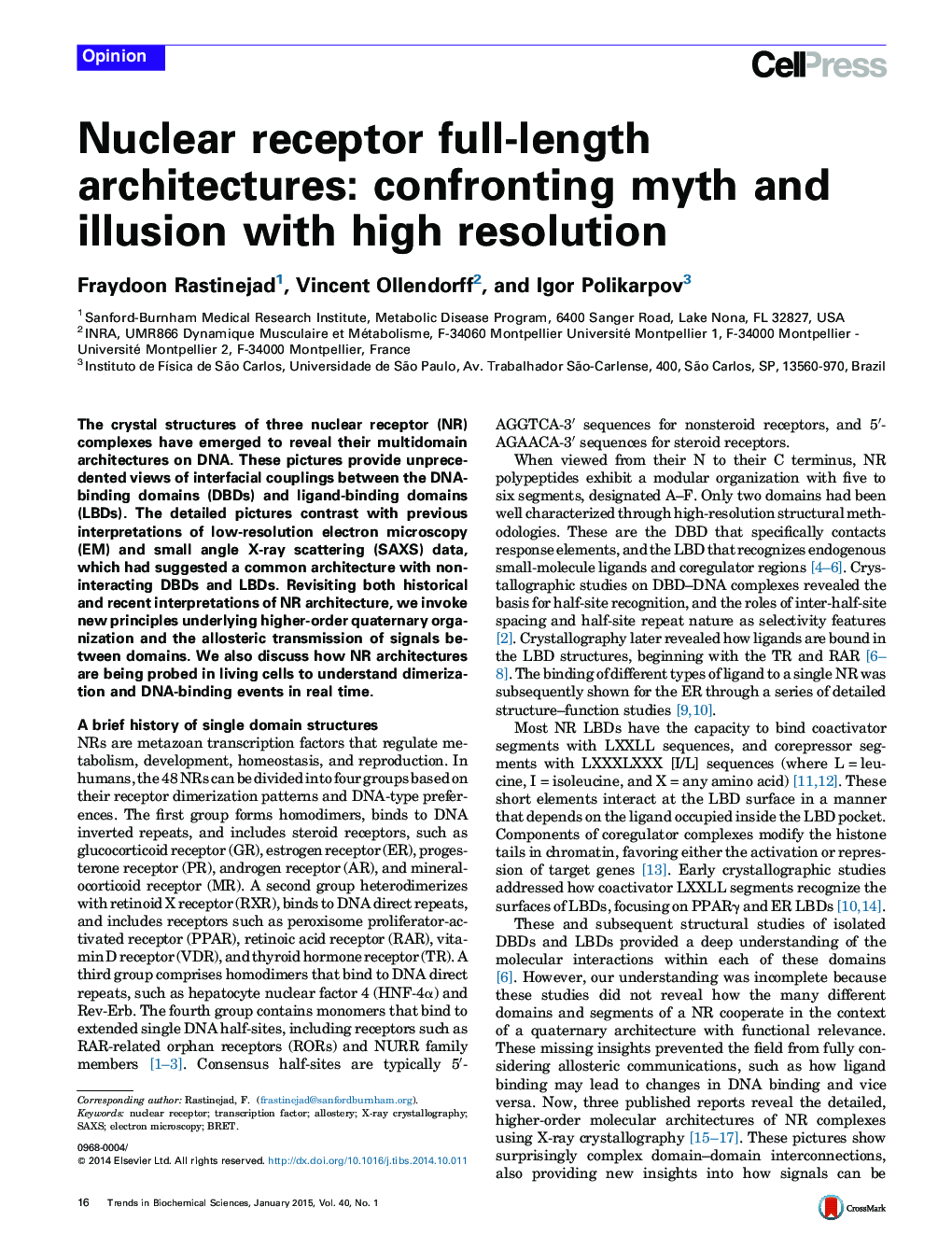| کد مقاله | کد نشریه | سال انتشار | مقاله انگلیسی | نسخه تمام متن |
|---|---|---|---|---|
| 2030639 | 1071226 | 2015 | 9 صفحه PDF | دانلود رایگان |
• The mousetrap mechanism appears misconceived due to crystal-packing artifacts and their misinterpretations.
• An alternate mechanism better explains how ligands can activate receptors, based on stabilization of H12 dynamics by activating ligands.
• A recently proposed mechanism invoking allostery to explain how isolated LBDs of RXR–RAR bind coactivators is confounding, because it is based on contradictory SAXS and crystallographic results.
• Low-resolution EM and SAXS studies of RXR–VDR and RXR–RAR full-length receptors show disconnected DBD–LBD interactions and other domain displacements that suggest they are not functional complexes.
• A common architecture proposed for NR dimers based on EM/SAXS data suggests that DBDs and LBDs cannot directly communicate.
• Three high-resolution crystal structures showing extensive DBD-LBD domain-domain interactions and unique architectures, contradict key elements of the EM/SAXS suggested common architecture.
• The multidomain crystal structures have LBD and DBD structures that agree with all previous structures of isolated domains, and their known modes of binding to DNA, ligands, and coregulators.
• The crystal structures may be further validated by mutagenesis and solution-based studies (including a separately reported SAXS study) MS, and BRET studies. They also show DNA-binding polarity that was clearly anticipated.
• Domain–domain interactions in all three crystal structures suggest that signals are allosterically transmitted across receptor architectures.
• Newly reported studies based on FRET, FRAP, and BRET are revealing how NRs organize their dimerization and DNA interactions in real time and inside living cells.
The crystal structures of three nuclear receptor (NR) complexes have emerged to reveal their multidomain architectures on DNA. These pictures provide unprecedented views of interfacial couplings between the DNA-binding domains (DBDs) and ligand-binding domains (LBDs). The detailed pictures contrast with previous interpretations of low-resolution electron microscopy (EM) and small angle X-ray scattering (SAXS) data, which had suggested a common architecture with noninteracting DBDs and LBDs. Revisiting both historical and recent interpretations of NR architecture, we invoke new principles underlying higher-order quaternary organization and the allosteric transmission of signals between domains. We also discuss how NR architectures are being probed in living cells to understand dimerization and DNA-binding events in real time.
Journal: - Volume 40, Issue 1, January 2015, Pages 16–24
